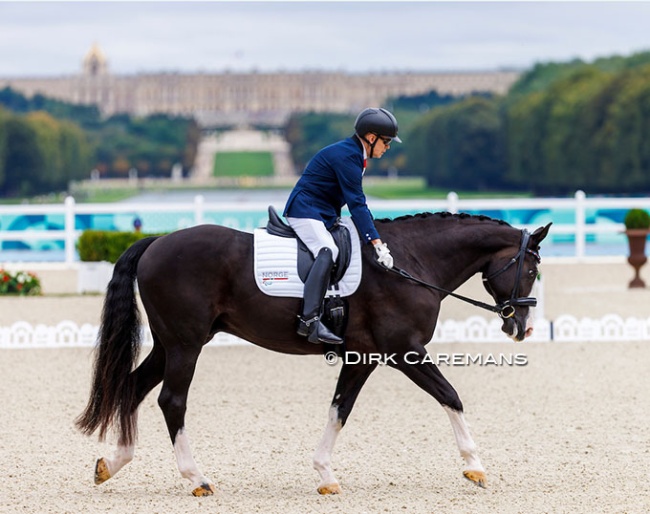
-- by Silke Rottermann for Eurodressage - Photos © Hippofoto
It is just about one week ago that the Paralympic flame extinguished. Its warmth still seems to glow when thinking back to fantastic days of para-dressage in the park of Versailles. There this sport experienced its finest hours in front of thousands of spectators who waved instead of clapped and still expressed an enthusiasm which mirrored the performances and the outstanding horsemanship shown in this magnificently located dressage arena. One month earlier the able bodied competed for dressage medals in the same venue.
Royal Setting for Para Dressage
More than 70 years ago a disabled woman became the first of her gender to win an Olympic medal in dressage: The Dane Lis Hartel, paralyzed below her knees after surviving polio, had no other choice but to compete with the able bodied in Helsinki 1952 and Stockholm 1956 as para-dressage was still decades away.
Her name reappeared repeatedly during the Paralympic days in Paris to remind the posterity of Hartel and her mare Jubilee's outstanding feat. Both mastered the challenges of an Olympic Grand Prix with a special kind of understanding. The equestrian world of her days looked up with utmost admiring…to her success and the tremendous finesse of her riding which appears almost centaur-like to us today when watching videos.
Force Is No Option
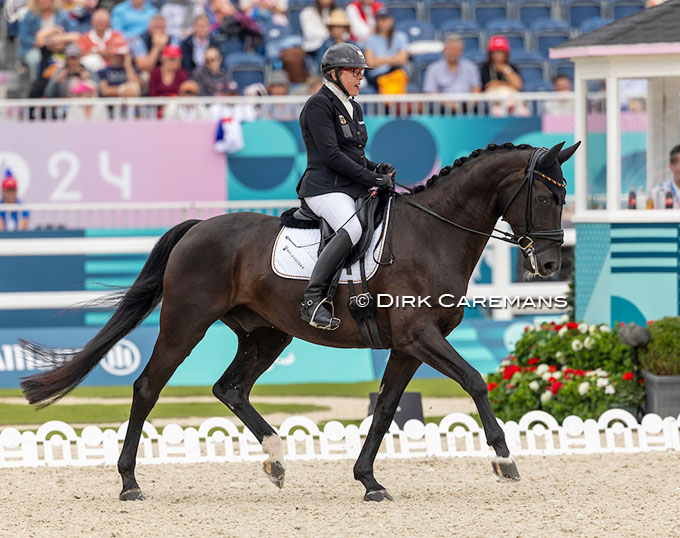
Dresing presented Dooloop in an exemplary frame.
In Paris it was the rides in para sport that quite often brought us back to the origins of dressage riding in which relaxed horses with content expressions moved in a natural rhythm.
More Beauty in Para Sport?!
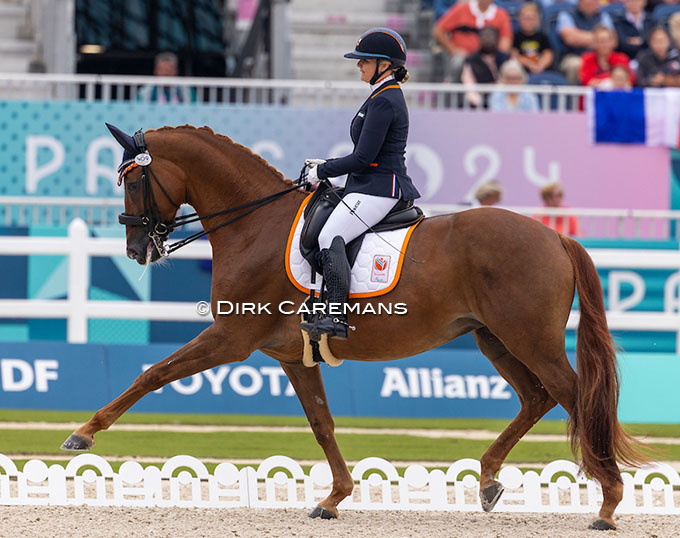
classes with the exceptional Daula
So while the able bodied dressage remains in the firing line of animal welfarist groups, most of the para-riders in Versailles delivered pictures of harmony and of extraordinarily and voluntarily cooperative horses. This became particularly apparent in the lower grades in which horses have all possibilities to refuse this cooperation.
It reminded me of an interview which German para rider Noah Kuhlmann gave to Eurodressage this spring, in which he mentioned that the „happiness of the horse is a very essential criteria in para-dressage“ and concluded that „in my very own personal opinion para-dressage is on a better way than the one of the able-bodied."
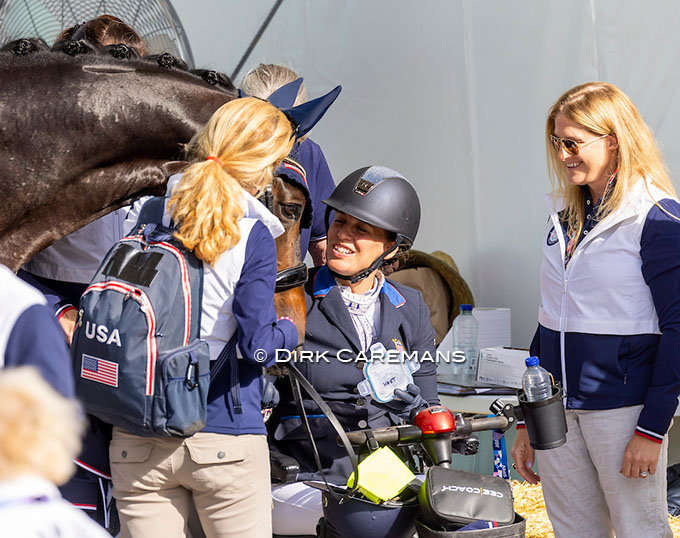
and her mare Floratina
Breathtaking
Those who saw the heavy bodied Latvian warmblood gelding King of the Dance draw his laps in the sand of Versailles, with ears pricked and incredible purpose, were not missing piaffe and passage in this program of Grade 1 which only foresees walk. He has a the truly breathtaking connection with his long-time rider Rihards Snikus.
Isn’t it what we seek for when watching dressage, way above spectacular movements? Those who saw the slender looking US American Fiona Howard becoming one with the powerful Hanoverian Diamond Dunes in Grade 2, were equally touched and became aware again that riding has nothing to do with physical strength. They are just two gold-medallists of so many we could admire in Paris, on and off the podium.
Harmony Pure
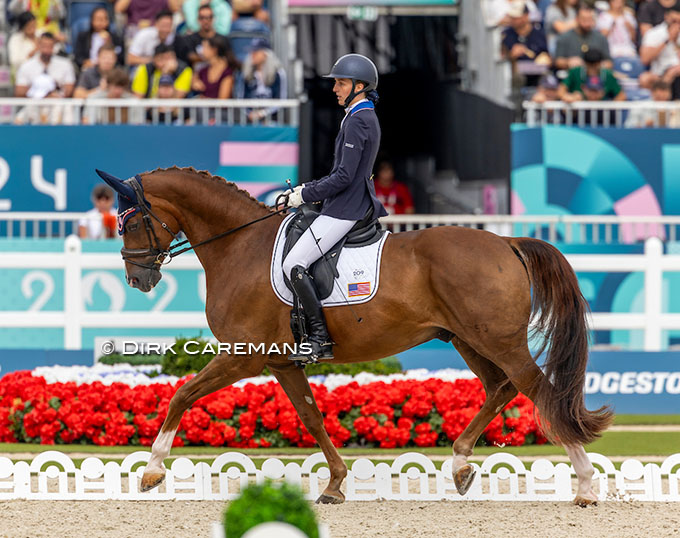
finesse as a rider on the powerful Diamond Dunes.
"Para sport is so important as it gives you the possibility to be happy," the Italian Grade I double individual medalist Sara Morganti told the Paralympic channel during this Games in France.
The volatile delight, tears of happiness, and palpable deep gratefulness towards the horse made the ever professionalising para dressage sport in Paris something which displayed true Olympic spirit.
Para-dressage riders and their horses: truly "a bond like no other."
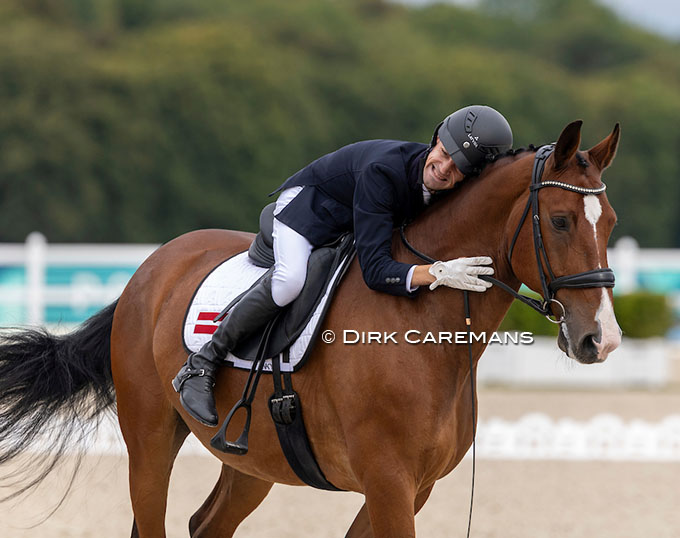
take his arms off his double gold medalist on four
hooves
Related Links
Snikus, Howard, Hart, Haerkens, and George Win Kur Gold at the 2024 Paralympics
U.S.A. Win Historic Team Gold at the 2024 Paralympic Games
Haerkens Heralds New Era as George Shows Enduring Class at 2024 Paralympics
Paralympic Equestrian Stars All Set to Dance on Versailles Stage